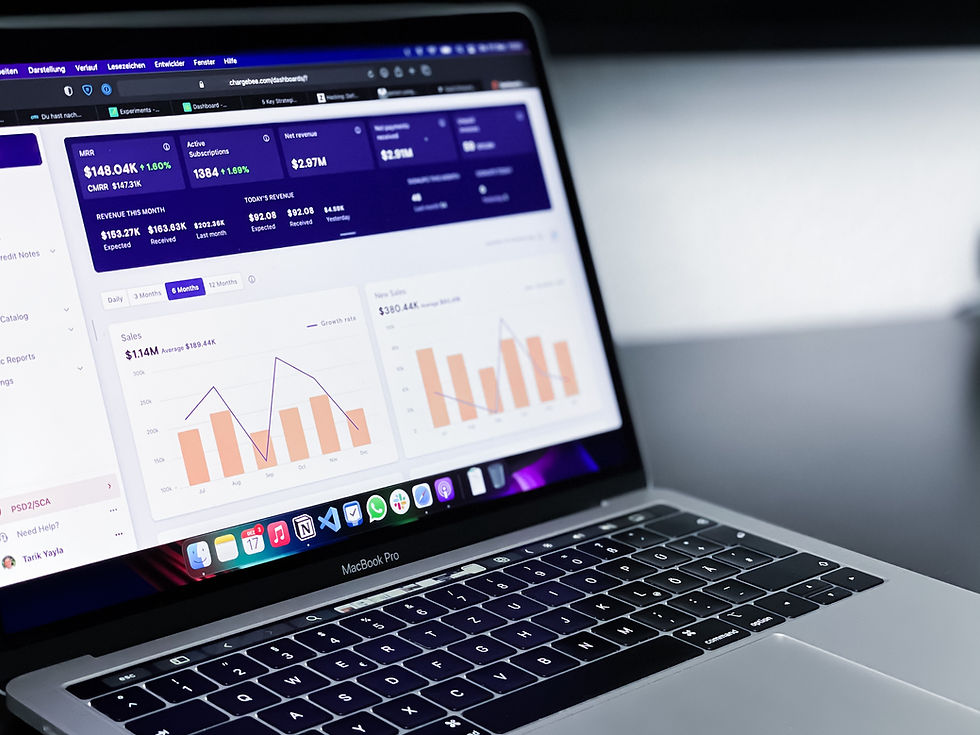Return on Ad Spend (ROAS): A Comprehensive Guide for Marketers
- Travis Hall
- Apr 14, 2023
- 3 min read
Updated: Apr 20, 2023
Return on Ad Spend (ROAS) is a crucial metric for marketers, as it measures the effectiveness of advertising campaigns in generating revenue. Understanding and optimizing ROAS can help businesses allocate their marketing budgets more efficiently and maximize their return on investment. In this article, we will delve into the concept of ROAS, explain how to calculate it, and share best practices for improving your ROAS.
What is Return on Ad Spend (ROAS)?
ROAS is a performance metric that evaluates the profitability of an advertising campaign. It represents the revenue generated from the campaign divided by the total ad spend. A high ROAS indicates that a campaign is generating more revenue than it costs, while a low ROAS suggests that the campaign may not be cost-effective.
How to Calculate ROAS
Calculating ROAS is a simple process that involves dividing the revenue generated by the advertising campaign by the total ad spend. The formula for ROAS is:
ROAS = (Revenue from Ad Campaign) / (Total Ad Spend)
For example, if an advertising campaign generates $10,000 in revenue and costs $2,000, the ROAS would be 5 ($10,000 / $2,000). This means that for every dollar spent on advertising, the campaign generated $5 in revenue.
Best Practices for Improving ROAS
Set clear campaign objectives: Establish specific goals and key performance indicators (KPIs) for your advertising campaigns to ensure they align with your overall business objectives. Clear goals will help you make informed decisions about ad spend and optimize campaign performance.
Test different ad formats and platforms: Experiment with various ad formats (e.g., display, video, carousel) and platforms (e.g., Google Ads, Facebook Ads, LinkedIn Ads) to identify the most effective combinations for your target audience. Continuously test and iterate to improve ROAS.
Segment and target your audience: Use audience segmentation and targeting to deliver personalized, relevant ads to the right people at the right time. Effective targeting can lead to higher conversion rates and better ROAS.
Optimize ad creatives and copy: Continuously test and refine your ad creatives and copy to ensure they resonate with your audience and drive conversions. Use A/B testing to compare different ad variations and identify top performers.
Implement conversion tracking and attribution: Accurately track conversions and attribute them to specific campaigns to get a clear understanding of your ROAS. This will help you identify high-performing campaigns and allocate ad spend accordingly.
Monitor and adjust bids: Regularly review and adjust your bids to optimize campaign performance. Use automated bidding strategies like Target ROAS, Maximize Conversions, or Enhanced Cost Per Click (ECPC) to improve ad performance and ROAS.
Analyze campaign data and make data-driven decisions: Use analytics tools like Google Analytics or Facebook Ads Manager to monitor campaign performance and make data-driven decisions. Regularly review your ROAS and other KPIs to identify areas for improvement and optimize your campaigns.
Return on Ad Spend (ROAS) is a critical metric for marketers looking to maximize the effectiveness of their advertising campaigns. By calculating and optimizing ROAS, businesses can allocate their marketing budgets more efficiently and improve their return on investment. Implementing best practices and continuously analyzing campaign data can lead to higher ROAS and ultimately drive business growth.
To further enhance your understanding of ROAS and improve your advertising strategies, consider exploring resources from industry experts, such as Google Ads Help and Facebook Business Help Center.
Additionally, articles like Neil Patel's comprehensive guide to optimizing ROAS and HubSpot's tips for improving ad performance provide valuable insights and actionable advice to help you refine your advertising campaigns.
Remember, regularly monitoring and evaluating your ROAS is essential for maintaining a strong, data-driven approach to your advertising efforts. By staying informed on industry trends and leveraging the latest tools and techniques, you can ensure your campaigns consistently deliver high ROAS and contribute to your company's long-term success.



